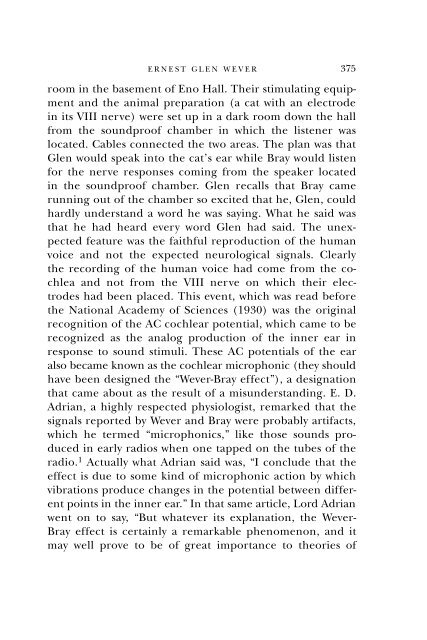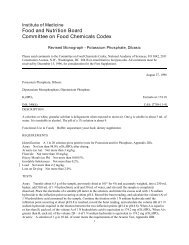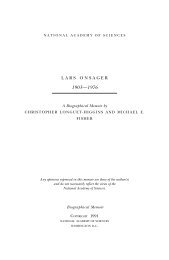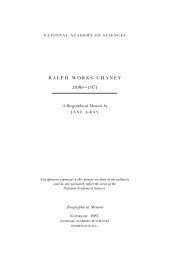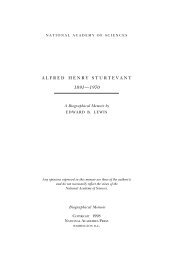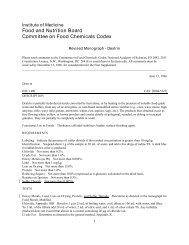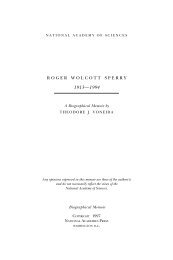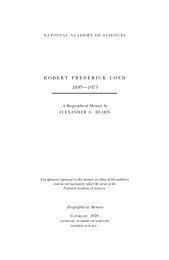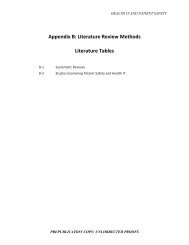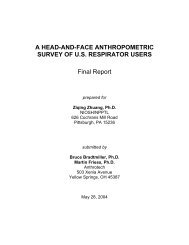ERNEST GLEN WEVER - National Academy of Sciences
ERNEST GLEN WEVER - National Academy of Sciences
ERNEST GLEN WEVER - National Academy of Sciences
Create successful ePaper yourself
Turn your PDF publications into a flip-book with our unique Google optimized e-Paper software.
<strong>ERNEST</strong> <strong>GLEN</strong> <strong>WEVER</strong><br />
375<br />
room in the basement <strong>of</strong> Eno Hall. Their stimulating equipment<br />
and the animal preparation (a cat with an electrode<br />
in its VIII nerve) were set up in a dark room down the hall<br />
from the soundpro<strong>of</strong> chamber in which the listener was<br />
located. Cables connected the two areas. The plan was that<br />
Glen would speak into the cat’s ear while Bray would listen<br />
for the nerve responses coming from the speaker located<br />
in the soundpro<strong>of</strong> chamber. Glen recalls that Bray came<br />
running out <strong>of</strong> the chamber so excited that he, Glen, could<br />
hardly understand a word he was saying. What he said was<br />
that he had heard every word Glen had said. The unexpected<br />
feature was the faithful reproduction <strong>of</strong> the human<br />
voice and not the expected neurological signals. Clearly<br />
the recording <strong>of</strong> the human voice had come from the cochlea<br />
and not from the VIII nerve on which their electrodes<br />
had been placed. This event, which was read before<br />
the <strong>National</strong> <strong>Academy</strong> <strong>of</strong> <strong>Sciences</strong> (1930) was the original<br />
recognition <strong>of</strong> the AC cochlear potential, which came to be<br />
recognized as the analog production <strong>of</strong> the inner ear in<br />
response to sound stimuli. These AC potentials <strong>of</strong> the ear<br />
also became known as the cochlear microphonic (they should<br />
have been designed the “Wever-Bray effect”), a designation<br />
that came about as the result <strong>of</strong> a misunderstanding. E. D.<br />
Adrian, a highly respected physiologist, remarked that the<br />
signals reported by Wever and Bray were probably artifacts,<br />
which he termed “microphonics,” like those sounds produced<br />
in early radios when one tapped on the tubes <strong>of</strong> the<br />
radio. 1 Actually what Adrian said was, “I conclude that the<br />
effect is due to some kind <strong>of</strong> microphonic action by which<br />
vibrations produce changes in the potential between different<br />
points in the inner ear.” In that same article, Lord Adrian<br />
went on to say, “But whatever its explanation, the Wever-<br />
Bray effect is certainly a remarkable phenomenon, and it<br />
may well prove to be <strong>of</strong> great importance to theories <strong>of</strong>


